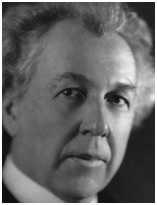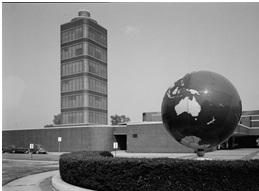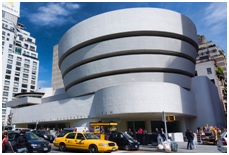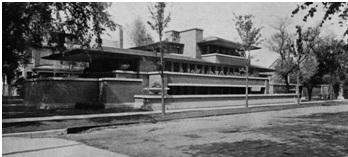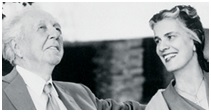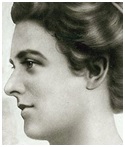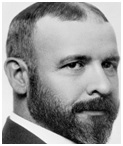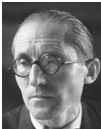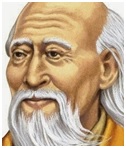|
 |
|
 |
Frank Lloyd Wright - Creativity and Architecture
Frank Lloyd Wright (1867-1959)
American architect (pictured right). Famous for his revolutionary ideas like:
His buildings include... The Imperial Hotel in Tokyo (sadly demolished in 1968). The headquarters of Johnson Wax (pictured right), makers of cleaning products like Mr. Muscle.
Why was he so creative?
1. Vision He followed his dream of the world he wanted to create, represented by his ideal community of Broadacre City, unfortunately never built. It was to be a network of homes, parks, schools, businesses, pollution free industries, farms and roads. It wasn’t a modern city, which he attacked as “a parasite of the spirit”. Lloyd Wright:
2. Purpose He believed a great building should do three things:
a) serve mankind (including his customers) This was his most important aim. He wanted to appeal to all Americans with a distinctly American style without any European influences. His Imperial Hotel in Tokyo:
b) belong to the era in which it was built So his buildings were modern (like New York's Guggenheim Museum, pictured right) .
c) respect for the environment He saw himself as a child of nature, totally dedicated to preserving its beauty.
3. Revolutionary He broke with all the architectural traditions of the past including classicism, based on Roman and ancient Greek architecture. He said that an architect should:
For example, his Prairie style houses were incredibly popular, first built in the early 1900’s. They:
Pictured right is Robie House in Chicago, the most famous Prairie house
4. Continuous improvement He kept on developing new architectural styles. “What we did yesterday, we won’t do today” was his motto. Lloyd Wright:
5. Order in chaos He was never entirely satisfied with his work and made constant changes until it was finished. Once he removed a couple’s wall when they were having a barbecue party! But he made sure there was order in this continual chaos of change by insisting that all work be directed towards achieving his design objectives.
6. Ambition, self-confidence and determination In 1930 he said he wanted to be the greatest architect ever. He was helped in this ambition by his: a) self-belief (his enormous, often arrogant, belief in his own ability).
b) determination He overcame big difficulties:
7. Learning He learned from other great architects, particularly Louis Sullivan, pictured right (1856-1924), for whom he worked in Chicago. Sullivan taught him to:
But Lloyd Wright didn’t ignore form (i.e. aesthetic needs like style and beauty) unlike other architects such as the Frenchman Le Corbusier, pictured right, (1887-1965), who said that houses were simply “machines for living”. As a boy Lloyd Wright also learned from
For example, in church, Frank experienced the wonder of beautiful music. 8. Philosophy and risk taking All his buildings were based on Lao Tzu’s (pictured right) principle: “the reality of the vessel was the void within it”. In other words, open spaces are just as important as the buildings themselves. His Welsh grandparents brought from Wales the motto, which also greatly influenced him: “Truth against the world”. He stood up for what he believed was beautiful architecture, even if it meant hardship and losing money. For example, in 1893 he left a secure job with Louis Sullivan and started his own business.
Key quotes on architecture and design Form and function should be one, joined in a spiritual union. A building is not just a place to be. It is a way to be. Space is the breath of art. The architect must be a prophet...If he can’t see at least ten years ahead, don’t call him an architect. The physician can bury his mistakes, but the architect can only advise his client to plant vines.
Key quote on creativity An idea is salvation by imagination. |
|
|
||
|
|
|
||
|
||
| Copyright © wisdomtowin.com All Rights Reserved | ||
|

